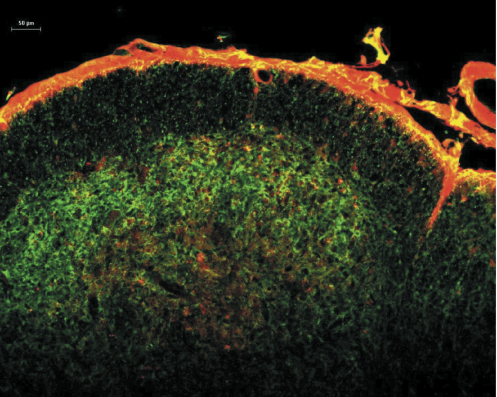SP-CTA (Cat. #IT-39) is an exciting new tool for use in the research of neurokinin (NK-1) receptor-expressing cells of the central nervous system. A conjugate of the substance P molecule and the catalytic subunit of Cholera toxin, this product can be used very effectively in vivo for increasing sensitization of these neuronal cells. Selectively targeting the NK-1r-expressing cells with the substance P moiety allows the researcher to stimulate only the cells of interest by amplifying their cAMP production with the CTA, without altering the neighboring cells. This effect lasts for a few days, and gives the researcher an opportunity to study behaviors such as those related to the perception of pain or the control of breathing. See Figure 1 and Cover article of Targeting Trends Vol. 8, Iss. 4.

